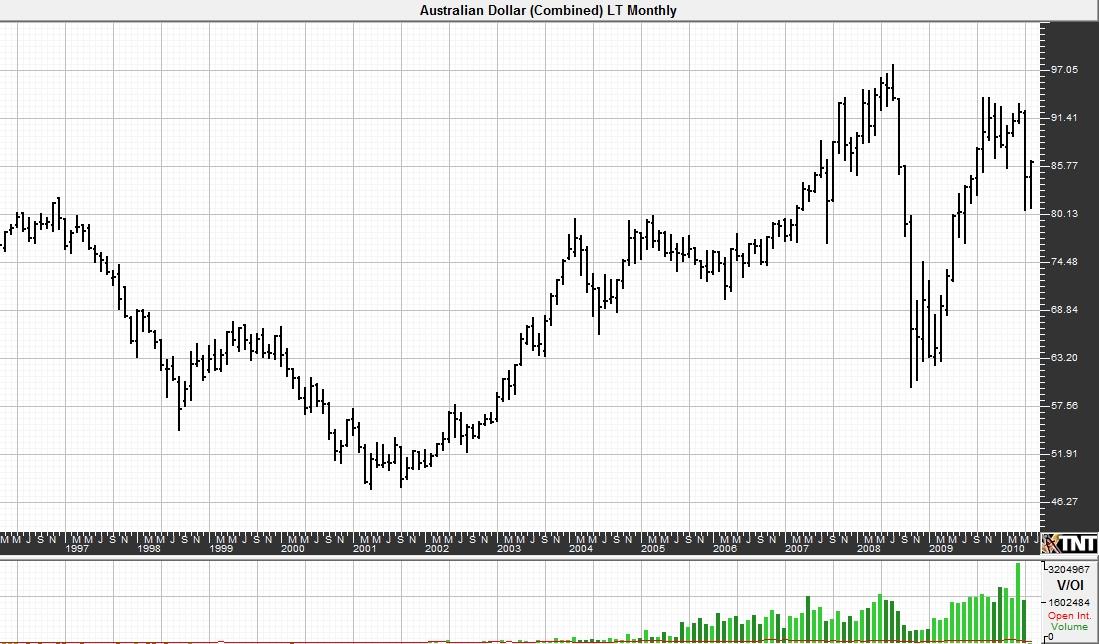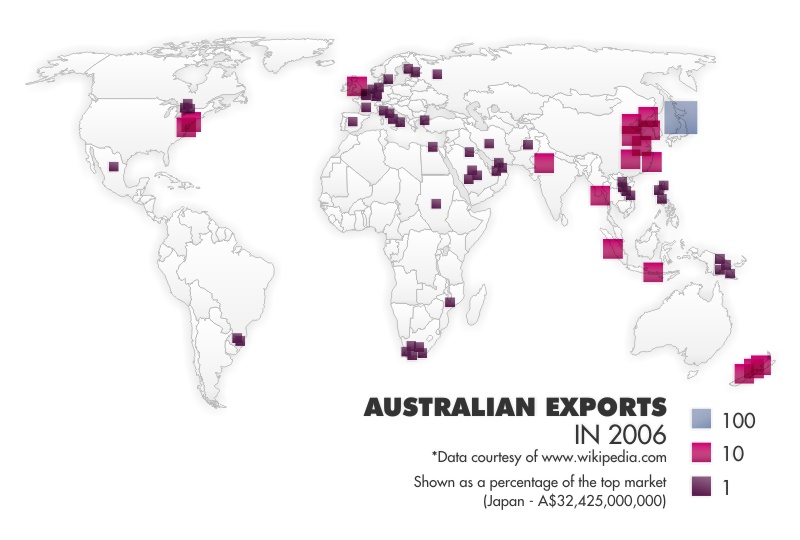traderkenny
Active member
- Messages
- 106
- Likes
- 4
The Learn About Futures Insider:
Australian Dollar
Australian Dollar
The official currency of the Commonwealth of Australia, the Australian Dollar - or Aussie dollar as it is sometimes called - was first introduced in the 1960s as a replacement for the Australian pound. Although the Prime Minister at the time wished to name the currency the "Royal", the choice proved as unpopular as other suggestions (the Austral and the Koala) and "dollar" was selected. The following contract specifications will refer to the Australian Dollar/US Dollar contract from the foreign exchange futures listings from the CME Group.
Contract Size: 100,000 Australian dollars
Price Quote & Tick Size: $.0001 per Australian dollar increments ($10.00/contract). $.00005 per Australian dollar increments ($5.00/contract) for AUD/USD futures intra-currency spreads executed on the trading floor and electronically, and for AON transactions.
Contract Months: March, June, September, December
Trading Specs: Open outcry is 7:20 a.m.-2:00 p.m. and Globex hours are Sundays: 5:00 p.m. - 4:00 p.m. Central Time (CT) next day. Monday - Friday: 5:00 p.m. - 4:00 p.m. CT the next day, except on Friday - closes at 4:00 p.m. and reopens Sunday at 5:00 p.m. CT.
Daily Price Limit: Consult exchange.
Trading Symbols: AD, 6A on Globex

Past performance is not indicative of future results.
***chart courtesy of Gecko Software
Australian Dollar Facts
The Australian dollar was pegged to the British pound and then to the US dollar under the Bretton Woods system. Following other changes and pegs, the Australian dollar was floated in 1983. The power to issue banknotes and other central banking responsibilities fall to the Reserve Bank of Australia. In consultation with the Australian government, the bank also helps with currency and financial stability and inflation controls through monetary policy.The bank board consists of nine members. Meetings will normally occur monthly (with the exception of January) and official policy and information can be found on the bank's official website. Interest rates are considered to be comparatively high, and the historic table can be found on their website for reference and verification.
On the economic front, Australia's services sector accounts for the largest percentage of the GDP (68 percent) while mining and agriculture account for less (10 percent). Australia is rich in natural resources such as iron, gold, natural gas, and coal. Agricultural products are also important and include wheat, cotton, wool, and sugar. The island nation has strong economic ties to Asia and the largest export markets include:
Japan
China
South Korea
New Zealand

Imported goods include machinery, transport, and telecommunication equipment as well as computers and office machines. Main import partners include the US, China, Japan, Singapore, and Germany.
Other key statistics and economic information are released by the Australian Bureau of Statistics and can be viewed online on their official website. According to the Bureau, foreign investment in Australia is led by the United Kingdom, the United States, and Japan.
Key Uses
Besides the obvious implications and uses for currency, the Australian dollar has investing applications as well. As a financial instrument, Australian dollar futures are often used as a means to hedge currency exchange risk.Key Concerns
Several factors within a nation can have a significant effect on the currency exchange rates and the relative importance of each is the subject of debate, however, it is important to be aware of some of the key fundamentals. Australia's raw and agricultural goods - as well as strengthening ties with China - are likely considerations when reviewing the value of their dollar.Inflation: It is generally believed that countries with consistently lower inflation exhibit a rising currency value while countries with higher inflation may see currency depreciation.
Interest Rates: High interest rates may attract foreign investors and that can lead to an exchange rate increase while the opposite scenario is possible in a country with low interest rates.
Overall Economic Conditions: Everything from a country's balance of trade to the size of their deficit or surplus can serve as a barometer of the condition of the country and the likelihood of default. Investors look for countries with stronger economic foundations and the better the economic foundation of one country versus another may increase the value of the country's currency. Sovereign credit ratings from places like Moody's or S&P can impact the perception of a nation's growth and stability.
Perception: The so called "flight to quality" exists within foreign currencies as investors will often seek what they perceive as "safe haven" currencies during times of political or economical instability.
_______________________________________________________________________________________
Disclaimer: There is a substantial risk of loss in futures trading and it is not suitable for all investors. Losses can exceed your account size and/or margin requirements. Commodities trading can be extremely risky and is not for everyone. Some trading strategies have unlimited risk. Educate yourself on the risks and rewards of such investing prior to trading. Futures Press Inc., the publisher, and/or its affiliates, staff or anyone associated with Futures Press, Inc. or www.learnaboutfutures.com, do not guarantee profits or pre-determined loss points, and are not held monetarily responsible for the trading losses of others (subscribers or otherwise). Past results are by no means indicative of potential future returns. Fundamental factors, seasonal and weather trends, and current events may have already been factored into the markets. Options DO NOT necessarily move lock step with the underlying futures contract. Information provided is compiled by sources believed to be reliable. Futures Press, Inc., and/or its principals, assume no responsibility for any errors or omissions as the information may not be complete or events may have been cancelled or rescheduled. Any copy, reprint, broadcast or distribution of this report of any kind is prohibited without the expressed written consent of Futures Press, Inc.
